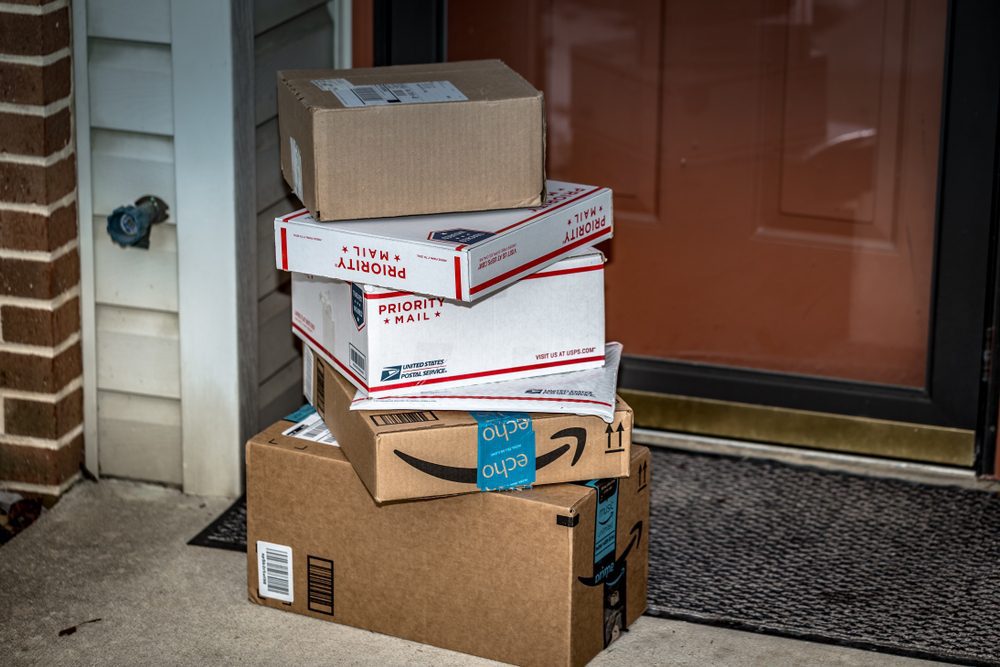The holiday rush doesn’t just clog queues at brick-and-mortar stores — it also causes backups for package carriers. An estimated 8% of packages handled by UPS and FedEx had delayed deliveries during the 2018 holiday season, according to a study by lateshipment.com. That may seem like an acceptably low percentage during a busy shopping period —until you consider that UPS handled a total of 800 million deliveries this year, with another 425 million delivered by FedEx. That translates to approximately 98 million late gift deliveries.
While retailers can’t control the efficiency of third-party shippers or factors such as severe winter weather, they can manage the relationship with their customers. Retailers have a number of options for dealing with delays, from providing pre-purchase advisories to addressing customer dissatisfaction after a package arrives late. Key strategies include:
- Placing a warning on the site home page: This tactic is sometimes used during large storms, when retailers know a large portion of their packages will be delayed. While it is a great way to be upfront and honest with shoppers, these warnings could prevent some conversions;
- Adjust delivery windows: If a standard two-day window is resulting in too many delays, add an extra day to the standard time frame. Doing this will adjust shopper expectations, though retailers must be careful not to fall outside the 3- to 4-day delivery window customers now expect.
- Call the affected shopper: When it becomes clear that a delivery delay is inevitable, a live call from a customer support agent is a powerful tool for reducing friction. The agent can answer questions and offer reassurances more effectively than a formal email, adding a personal touch to the interaction; and
- Compensation after the fact: If an order was delayed due to unforeseeable challenges and the customer wasn’t warned, consider giving them some form of compensation, like a coupon. This situation isn’t ideal, but proactively handling the problem is better than waiting for a complaint.
Pinpoint Areas Prone To Delays
Retailers can more effectively allocate their customer management resources when they understand where and when delays are most likely to occur. For the 2018 holiday season, the most densely populated cities were among the hardest-hit areas, with the sheer number of orders contributing to delays, according to Sriram Sridhar, CEO of lateshipment.com. The combination of a closely-packed population and consumers’ increased comfort with delivery as a fulfillment option both contributed to the problem, making delays almost inevitable in these areas. However, some retailers are seeing success through partnerships with smaller, localized shippers.
“What merchants have to do, and what we actually see a lot of really smart merchants already doing, is moving away from shipping carriers,” said Srihar in an interview with Retail TouchPoints. “They move toward hyperlocal same-day delivery options, particularly if they have a local warehouse, which offers a lot more flexibility in terms of how and when these deliveries happen.”
Yet not all deliveries can be handled solely by last-mile carriers. They may not be a practical choice for sparsely populated states, which also are likely to face delivery delays. Additionally, winter weather can create long delays even in areas that are normally problem-free.
Delays Happen, But Tracking Patterns Can Minimize Their Impact
Not all retailers will face the same rate of delays: apparel in particular saw a 5% increase in delays during the 2017 holiday season compared to the rest of the year. This industry, along with wine, subscription boxes and others, saw a 120% jump in deliveries during the holiday season, which resulted in a significant share of shipments arriving late:
- Electronics: 15% delay rate for UPS, 6.4% for FedEx;
- Wine: 16.3% delay ratefor UPS, 9.73% for FedEx;
- Apparel: 12% delay rate for UPS, 20.36% for FedEx;
- Jewelry: 14% delay rate for UPS, 18.36% for FedEx; and
- Subscription Boxes: 11% delay rate for UPS, 9% for FedEx.
In the case of apparel, packaging plays a role in the high number of delays, as does the massive increase in deliveries being made. While retailers can’t eliminate these factors or ensure that any specific delivery is made on time, “Understanding these patterns and putting compensation for them in the customer management process will make shoppers happy and loyal,” said Srihar.
The day of the week also matters: orders placed over the weekend are typically processed on Monday, resulting in three days’ worth of deliveries being sent out all at once. Retailers can smooth out the pipeline by tracking when deliveries are due and even delaying some. For example, if an order that is placed on a Sunday isn’t scheduled to arrive until Wednesday, it could be held in the distribution center until Tuesday rather than going out first thing Monday morning.
Get Ahead Of The Problem Whenever Possible
Retailers can control how a shopper learns about problems with their order and what their expectations will be for a remedy, according to Srihar. While it’s not possible to completely eliminate delivery delays, particularly during the holidays, a strong customer management system can minimize the fallout and even become a loyalty driver.
Such measures are particularly important for time-sensitive services like UPS Next Day Air, which saw a 15% increase in delays during the 2017 holiday season. Paying a premium doesn’t necessarily guarantee on-time delivery, and retailers must be prepared to minimize the friction caused by events entirely outside of their control.
“After the package leaves the warehouse, there is very little a merchant can actually do with that shipment,” said Srihar. “They don’t have control over it, but they still have the opportunity to follow up on what is happening with that shipment, and update the customer or figure out the best way to compensate them.
“You must understand what’s going on with these shipments, including which customers are not going to receive their packages on time and which shipments are damaged,” Srihar added. “Reaching out and telling them exactly what’s happening, giving them knowledge and making things right for them — those things go a long, long way in making sure you never lose the customer.”













